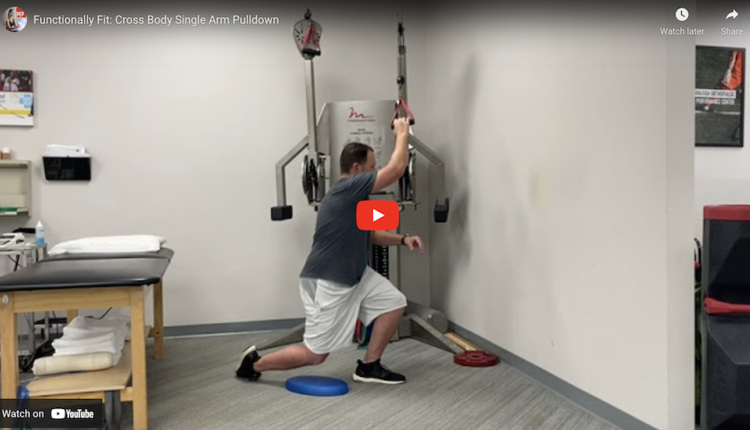In the past, I have discussed the importance of using elastic resistance to promote gluteal strength. Weakness in the gluteus maximus and gluteus medius is often cited as contributing to patellofemoral pain, IT band problems, hip pathology and even back pain. Furthermore, activating the glutes and minimizing tensor fascia lata (TFL) activation is preferential to avoid synergistic dominance with abduction exercises. This is a common finding when I assess clients.
Execution: Place a mini-band above the knees. Now, move into an athletic stance with soft knees (bent 30-45 degrees), mild hip flexion and a neutral spine. The hands may be placed on the hips or held out in front of the chest.

Next, slowly step to the right leading with the right leg, while keeping the toes pointed straight ahead. Avoid externally rotating the lead leg/foot. As you move the left leg, aim to replace 50% of the distance between the right and left foot. In other words, the feet should not touch, and the trail foot should not drag along the ground.
Repeat this for about 10 steps or 10 yards to the right, and then repeat stepping to the left. Perform 2-3 sets. Emphasis should be on quality movement, while avoiding an excessive weight transfer to the outer portion of the foot.
Progression: Move the band around the ankles to increase the lever arm. Next, increase the level of resistance by changing bands. Finally, consider one band above the knees and one at the ankles for advanced clients.
Application: Many people struggle to activate their gluteal muscles while squatting, running, jumping or performing athletic activities. Turning on these muscles and “priming” the body to utilize the glutes in its optimal neuromuscular firing pattern is helpful in improving alignment and reducing injury potential.
Activating these muscles prior to doing multi-joint lifts, sprinting, plyometrics, etc. is beneficial in promoting optimal activation/stabilization in order to control excessive pronation with deceleration and eccentric training. The lateral stepping can easily be added to the dynamic movement prep or even used as part of the normal training program. I find this exercise to be especially helpful in reducing patellofemoral pain. For those with discomfort in a bent knee position, consider allowing them to stand in a more upright position.




















